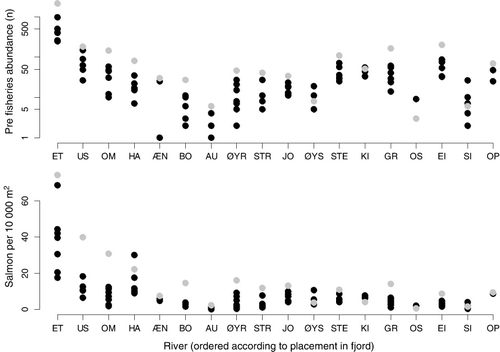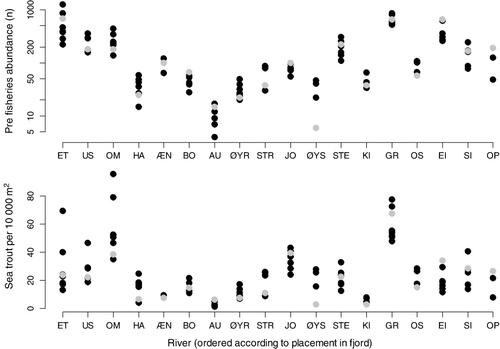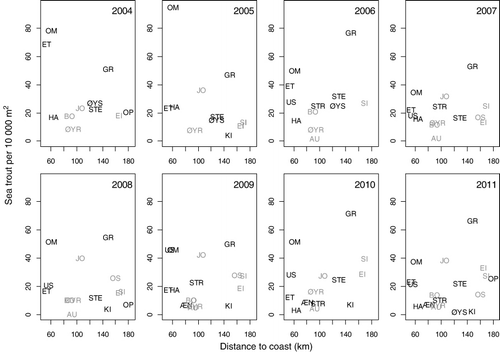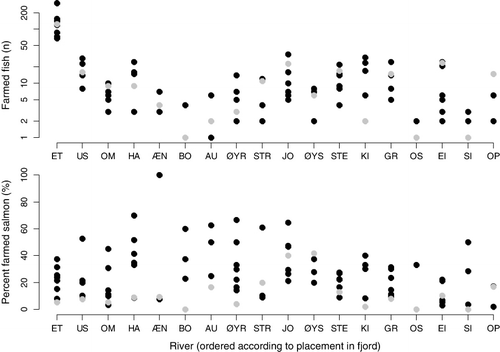Figures & data
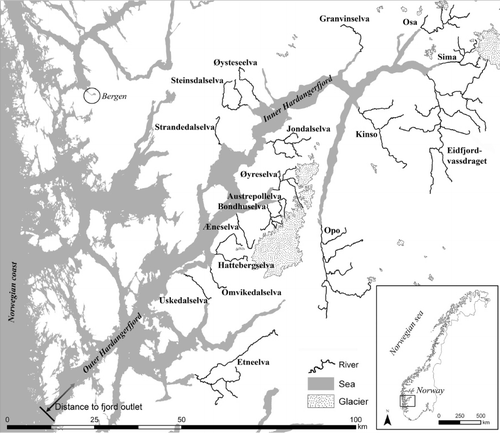
Table I. Categorization of rivers in the Hardangerfjord. Shortened code is abbreviation of name used in graph. Area is the area of river polygons from digital maps using ArcGis©. Length is distance from anadromous obstacle to river outlet following a transect in the middle of the river. Distance is distance from river outlet to outlet of the Hardangerfjord (Bømlafjord). Glacier is presence of glacier in the catchment. Physical is a categorization of the human physical alteration of the river. Regulation is the presence of river regulation in the river. Discharge is the categorization of whether the discharge has been severely reduced.
